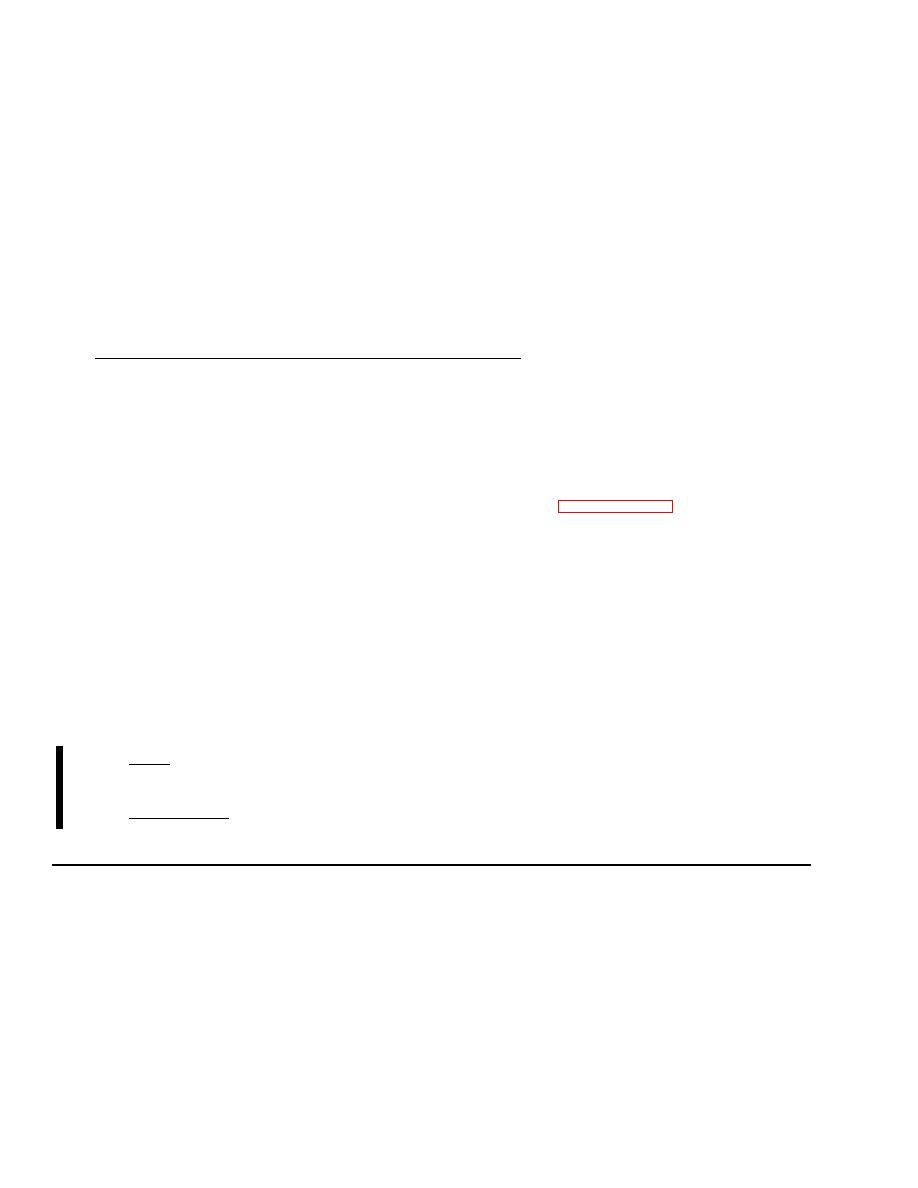
TM 10-5410-228-24
Repair. The application of maintenance services1, including fault location/troubleshooting2,
i.
removal/installation and disassembly/assembly3 procedures, and maintenance actions4 to identify
trouble and restore serviceability to an item by correcting specific damage, fault, malfunction, or
failure in a part, subassembly, module (component or assembly), end item, or system.
j.
Overhaul. That maintenance effort (service/action) prescribed to restore an item to completely
serviceable/operational condition as required by maintenance standards in appropriate technical
publications (i.e., DMWR). Overhaul is normally the highest degree of maintenance performed by the
Army. Overhaul does not normally return an item to like new condition.
k. Rebuild. Consists of those services/actions necessary for the restoration of unserviceable equipment
to a like new condition in accordance with original manufacturing standards. Rebuild is the highest
degree of material maintenance applied, to Army equipment. The rebuild operation includes the act
of returning to zero those age measurements (e.g., hours/miles) considered in classifying Army
equipment/components.
a. Column 1, Group Number. Column 1 lists functional group code numbers, the purpose of which is to
identify maintenance significant components, assemblies, subassemblies, and modules with the next
higher assembly.
b. Column 2, Component/Assembly. Column 2 contains the item names of components, assemblies,
subassemblies, and modules for which maintenance is authorized.
c.
Column 3, Maintenance Function. Column 3 list the functions to be performed on the item listed in
column 2. (For detailed explanation of these functions, see paragraph B.2.)
d. Column 4, Maintenance Level. Column 4 specifies each level of maintenance authorized to perform
each function listed in column 3, by indicating work time required (expressed as man-hours in whole
hours or decimals) in the appropriate subcolumn. This work time figure represents the active time
required to perform that maintenance function at the indicated level of maintenance. If the number
of complexity of the tasks within the listed maintenance function vary at different maintenance
levels, appropriate work time figures are shown for each level. The work time figure represents the
average time required to restore an item (assembly, subassembly, component, module, end item, or
system) to a serviceable condition under typical field operating conditions. This time includes
preparation time (including any necessary disassembly/assembly time), troubleshooting/fault
location time, and quality assurance time in addition to the time required to perform the specific
tasks identified for the maintenance functions authorized in the maintenance allocation chart. The
symbol designations for the various maintenance levels are as follows:
Field:
C ................... Operator or Crew Maintenance
O................... Unit Maintenance
F ................... Direct Support Maintenance
Sustainment:
H................... General Support Maintenance
D................... Depot Maintenance
Services Inspect, test, service, adjust, align, calibrate, and/or replace.
1
Fault location/troubleshooting The process of investigating and detecting the cause of equipment
2
malfunctioning; the act of isolating a fault within a system or Unit Under Test (UUT).
Disassembly/assembly The step-by-step breakdown (taking apart) of a spare/functional group coded
3
item to the level of its least component, that is assigned an SMR code for the level of maintenance under
consideration (i.e., identified as maintenance significant).
Actions Welding, grinding, riveting, straightening, facing, machining, and/or resurfacing.
4
Change 1


